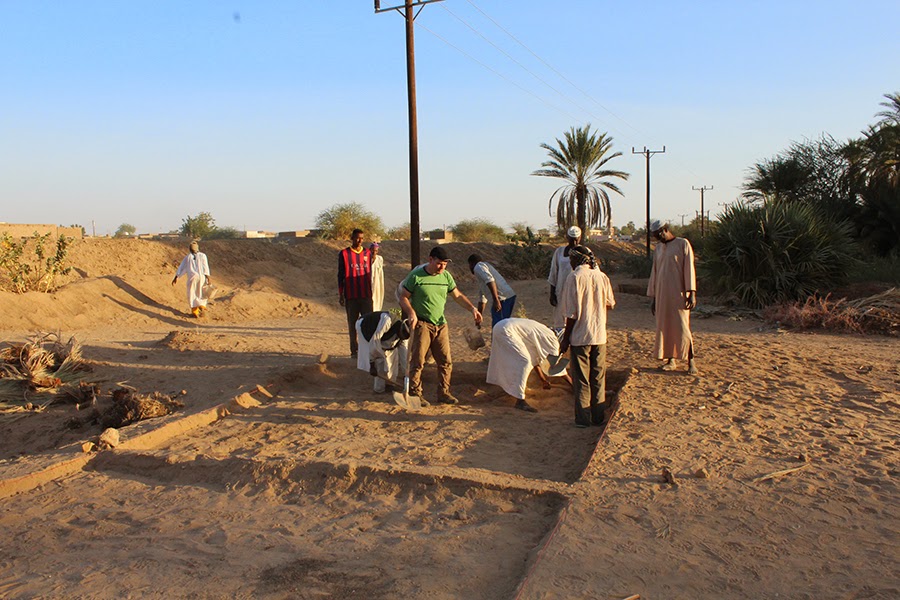I'm in the town of Karima, buying
construction supplies and taking advantage of the internet connection here to
make a couple of blog posts. Here's a guest post from our archaeobotanist,
Naomi F. Miller:
It has taken several days to get organized, so I have not
yet begun to float. But I have walked around in two main directions: west along
a wadi (the only place that has any plants on it...it really is dry here!) and
east to the Nile, planted in palm groves. There was a small spot that that had
flooded and dried with huge cracks, about 20 cm deep; Carola, the geologist
said with time and pressure it'd turn to shale, one of the three rock types in
the region (the others being sandstone and siltstone). I pinched a little
piece, almost hard as a rock, dissolved it in river; I now understand the black
mud of the Nile–it looked good enough to eat (like fine chocolate with good
mouth feel!), but I didn't.
On one of my wadi walks, young Hasan (maybe 10 years old)
joined me; he clearly was primarily interested in my pencil, but I was not
prepared to give it up. I let him use my camera to take a few photos, and he
did help me collect some seeds and encouraged me to take a photo of a woman on
a donkey cart and show it to her...the wonders of digital photography. You ask
what about the plants? Well, in the desert there aren't all that many types,
maybe 15 or so. Before I left the U.S., I made a folder for downloaded photos
of taxa that have been found on archaeological sites in Sudan. Some are so
obvious that I am pretty sure I've found them! I recommend you search on the
internet for images of Calotropis procera,
which grows everywhere (I first saw it in Khartoum).

The palm groves are a revelation! The trees are sort of
planted in rows, but because of all the offshoots, some basal and some aerial,
the plantings seem a little ad hoc (and there are acacias and other
wild-growing trees I don't know scattered about, along with beans, alfalfa, and
sorghum).
As for the animals, there are remarkably few, perhaps
because there's not much for them to eat. Out in the countryside around here
I've seen just a few goats, and donkeys. I've seen only one dog so far (!); it
did have that ancient Egyptian look to it. I have noticed a surprising number
(less than 10, but more than 3) dead animal parts, including fur...I'm
wondering if it is because of a paucity of scavengers. There are a lot of
songbirds in the palm groves. (In Khartoum I saw falcons, but not here, at
least not yet). In the village there have been a few cats caterwauling. A
lizard seems to have gotten zapped by the electricity and fell to the ground at
my feet even as I write this. There are lots of crickets, many of whom find
their way into the sink. Still no mosquitoes, but there are flies here and
there, and a few gnat-like bugs in the groves. So that's what I've seen with my
own eyes. And there are bats at the excavation.

























